Voigt Planes at WWG
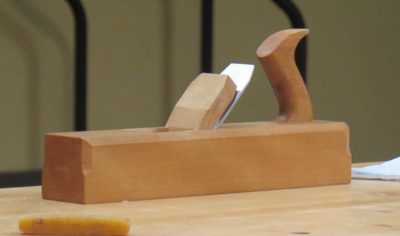
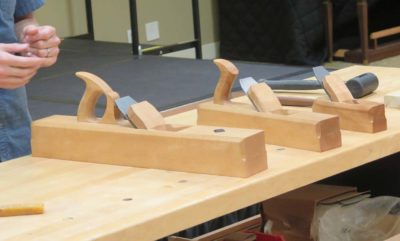
A recent foray to Mordor coincided with the monthly gathering of the venerable Washington Woodworkers Guild, whose fellowship I have enjoyed for more than three decades and at which I have presented numerous times. The meeting included a terrific recitation on and demonstration by music-professor-slash-toolmaker Steve Voigt of the double-iron English-style wooden planes he makes, and he brought his line of planes to show and use.


Steve has been cultivating interest in possibly making toothing planes and had asked me to bring a selection from my collection once he learned I was coming. I was delighted to oblige. Prior to the meeting, after he had set up his stuff, he spent a fair bit of time examining, studying, and measuring my planes, occasionally asking me about my preferences for this plane or that feature.

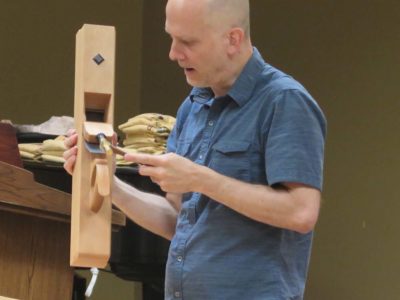
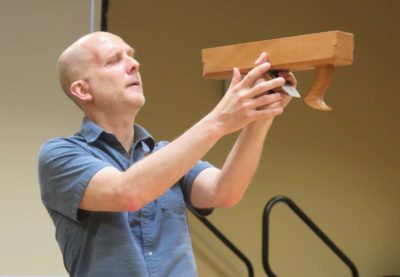
With the soft-spoken straightforwardness that he is known for Steve walked though the process he uses to design and construct his planes, which he has been making professionally now for closing in on a decade. In setting them up to work he prefers the cap iron to be as close to the cutting edge as possible, and he does most of the adjusting by eye (oh, to have eyes that can do that. It must be wonderful!)

His jack plane was set up as a heavy cutting fore plane and soon enough he had a good pile of stout shavings on the floor. One of the things he shows is the effect of a perfectly set-up double iron in the smoothing plane, wherein the gossamer shavings shoot straight up the throat and actually up his arm with very little curling or puckering. It is mighty impressive, and unfortunately I was so engrossed I forgot to take pictures.
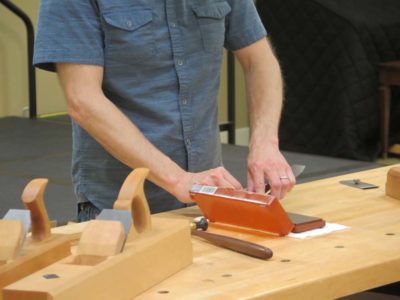
Steve concluded with a demonstration in answer to a question he probably gets every time he is talking to a woodworker; how do you sharpen? He is a hollow-ground, oil stone and free-handed micro-bevel guy, and the results speak for themselves.
I find Voigt planes to be elegant and high-performance, and own one myself (so far).


Hey Don, thanks for all the kind words. It was good to see you again, and the help with toothing planes was invaluable. I’m looking forward to toothing some tapered iron blanks on the metal shaper this fall (after we get moved!), and I’ll be back in touch before then to discuss some of the subtleties of tooth shape, tpi, etc.